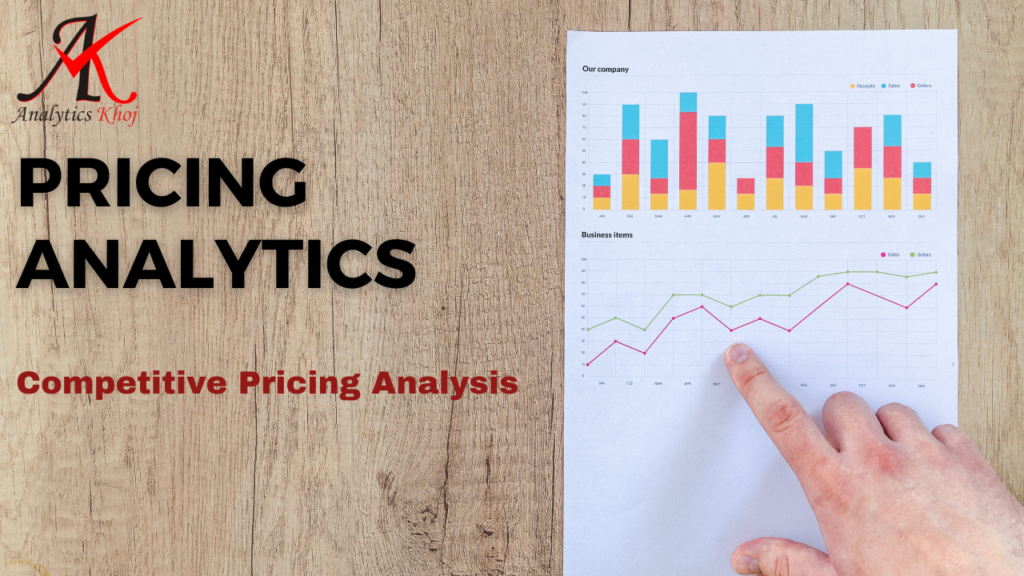In today’s dynamic business landscape, where consumers are spoiled for choice and competition is fierce, pricing strategies have emerged as a key battlefield for companies vying for market share. The concept of Competitive Pricing has risen to prominence as businesses recognize the pivotal role it plays in determining not only their profitability but also their long-term sustainability.
If you haven’t read the previous articles on “Pricing Analytics” please read that, this article will make more sense:
Article 1: Introduction of Pricing Analytics
Article 2: Understanding Price Elasticity and Demand Forecasting
The Significance of Competitive Pricing
Imagine you’re in a crowded marketplace with multiple vendors offering similar products. What differentiates one vendor from the others? In many cases, it’s the price. This is where competitive pricing comes into play. It’s not just about setting a price that covers your costs and provides a margin; it’s about setting a price that positions your product favorably in the eyes of consumers compared to your competitors’ offerings.
Competitive Pricing essentially involves analyzing what your competitors are charging for similar products and then strategically setting your own prices to either match, undercut, or offer more value than those competitors. The goal is to entice customers to choose your product over others, while still ensuring your business remains profitable.
Real-Life Example: Smartphone Market Showdown
Let’s delve into a real-life example to understand the power of competitive pricing. In the fiercely competitive smartphone market, companies like Apple, Samsung, and Google constantly battle for supremacy. Their pricing strategies can make or break their market position.
Consider the scenario where Company A, a smartphone manufacturer, plans to launch a new model with cutting-edge features. To determine the price, Company A conducts a competitive pricing analysis. They discover that their main rival, Company B, is offering a similar phone at $999. Company A now faces a critical decision: Do they price their phone higher, lower, or exactly the same?
If Company A decides to price their phone at $999 as well, they position themselves directly against Company B. Consumers might then choose based on other factors like brand loyalty or additional features. If Company A prices their phone lower, say at $899, they might attract budget-conscious customers, but they need to ensure they don’t compromise on perceived value. Conversely, pricing higher, say at $1099, could position them as a premium option, provided they offer compelling differentiators.
This example underscores how competitive pricing analysis helps businesses navigate the complex terrain of pricing. It’s not just about numbers; it’s about perception, value, and strategic positioning.
Methods for Effective Competitive Pricing Analysis
To execute competitive pricing analysis effectively, businesses employ various methods to gather data, analyze trends, and formulate winning strategies.

1. Market Research and Monitoring
Regularly monitoring competitors’ pricing strategies through online research, industry reports, and marketplaces provides valuable insights into their pricing movements and trends.
2. Data Collection Tools
Utilizing specialized tools that scrape and collect pricing data from different sources saves time and ensures accurate information is obtained.
3. Customer Surveys
Directly engaging with customers through surveys can provide insights into their perceptions of product value and pricing sensitivity.
4. Value Proposition Assessment
Understanding your product’s unique selling points and its value in the eyes of customers helps in setting prices that reflect its worth.
Competitive Pricing in a Nutshell
In a nutshell, Competitive Pricing isn’t just about slashing prices to the lowest point. It’s a strategic dance that balances value, perception, and market dynamics. When executed intelligently, competitive pricing can:
- Attract price-sensitive customers without compromising on quality.
- Position a brand as a premium option if backed by strong value propositions.
- Help businesses adapt swiftly to market changes and competitor actions.
Remember, the goal isn’t to chase the lowest price but to find the sweet spot that maximizes both revenue and customer loyalty.
Conclusion
In the realm of modern business, pricing has evolved into an art that requires careful analysis, foresight, and adaptation. Competitive Pricing analysis serves as a guiding compass, enabling businesses to navigate the turbulent seas of competition while maintaining profitability and market presence. By understanding competitors’ strategies, assessing market trends, and leveraging unique value propositions, companies can set prices that resonate with customers, securing their place in the market’s ever-changing landscape.
FAQs
- What is competitive pricing? Competitive pricing involves analyzing competitors’ prices and strategically setting your own to gain a competitive edge in the market.
- Why is it important? Competitive pricing helps businesses attract customers, maintain profitability, and adapt to market dynamics effectively.
- How can I gather competitor pricing data? You can gather data through market research, online tools, customer surveys, and value proposition assessments.
- Is competitive pricing solely about lowering prices? No, competitive pricing is about finding the right balance between price, value, and positioning to attract customers.
- Where can I learn more about effective pricing strategies?
In the grand arena of business, competitive pricing emerges as a formidable strategy, a strategy that transcends mere numbers to become a masterstroke of perception and value. It’s about positioning, attracting, and adapting – all aimed at thriving in a world where competition is the heartbeat of progress. With the right approach to competitive pricing analysis, businesses can forge ahead, ready to conquer the challenges and opportunities that lie ahead.
Credit and Reference
Image used : Image by Freepik


